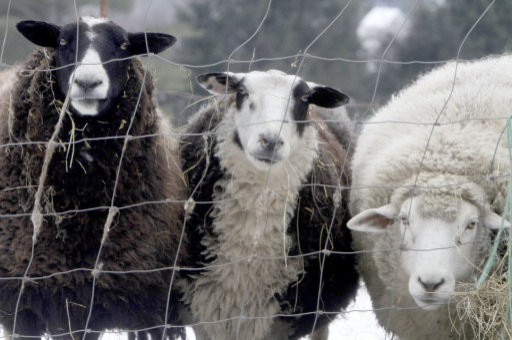Schmallenberg Virus: Scientists Say Spread Is A Warning To Europe

BRUSSELS (Reuters) - The outbreak of a new livestock disease in western Europe last year, particularly harmful to offspring, could move further into areas surrounding the worst affected countries in the next cycle of new births, scientists say.
Schmallenberg virus - named after the German town where it was first detected in November - infected sheep and cows on at least 2,600 farms in eight EU countries last year, most likely between August and October.
Thought to have been spread for hundreds of miles across Europe by biting midges and warm late summer winds, the virus has since been confirmed in Belgium, the Netherlands, Luxembourg, France, Italy, Spain and Britain.
It is particularly harmful to the offspring of animals infected during early pregnancy, resulting in stillbirths and malformations such as brain deformities, twisted spines and locked joints.
The impact on EU livestock production has been limited, and all the evidence so far shows that the virus poses no risk to humans. But scientists and officials say the rapid emergence and spread of Schmallenberg should be a cause for concern.
It is certainly a warning for the whole world in the sense that, unfortunately, new threats may emerge, said Alberto Laddomada, a former virologist who heads the animal health unit at the European Commission.
This virus has spread very, very quickly in the European Union amongst an animal population of many millions. Considering the massive spread in a population that is fully susceptible, the virus itself has had a limited impact, he told Reuters.
PROBLEMS AT THE MARGINS
Scientists say Schmallenberg is similar to a better known virus called Akabane, which has caused deformities in newborn cattle and other ruminants in Asia and Australia since the mid-1970s.
Like Akabane, Schmallenberg virus appears to have little impact on young or adult animals.
The good thing about Akabane, from what we know, is that these animals that have been exposed to the disease also become immune. So once you've been infected, you're protected, said Ana Afonso, scientific officer for animal health at the European Food Safety Authority (EFSA).
The Australian experience with Akabane is that once you have it, in the infected area you don't see the disease ever. The problem comes on the margins of the infected area.
The Commission's Laddomada described a similar situation with Schmallenberg: What we are observing now is the maximum possible negative effect of this virus. It's unlikely that we are going to see the disease again in those areas that have already been infected in 2011.
But with the return of summer and biting midges to Europe, there is a risk that Schmallenberg will spread to unexposed livestock in areas surrounding the previous infection zones.
At this stage there is not so much that we can do to prevent that the disease spreads further, we have to be clear, he said.
Countries bordering those where the virus has already been confirmed include Austria, Switzerland, Poland and the Czech Republic, but scientists say it is still too early to know exactly how far Schmallenberg has spread.
It's not possible to assert that it isn't circulating elsewhere, but it's only in Europe that it has been detected and reported officially, Bernard Vallat, director-general of the Paris-based world animal healthy body OIE, said.
RUSSIAN ROULETTE
Farmers are waiting nervously in Britain, where the virus has been detected as far as the English Midlands.
It's the disease frontier that's going to be the problem, said British National Farmers' Union (NFU) vice president Adam Quinney, a sheep and cattle farmer in the Midlands whose own livestock have not been infected, but whose neighbors' have.
It's like Russian roulette - you don't know who it's going to hit and how much it's going to hit you.
The direct impact on EU livestock producers has so far been limited, but pig producers have faced significant indirect costs due a ban on EU livestock imports to Russia - the bloc's biggest export market - despite the fact that Schmallenberg does not affect pigs.
The Commission's Laddomada said that while direct losses from the virus had not yet been quantified, they were likely to be between several hundred thousand and a few million euros.
The main thing for all the affected farmers I've spoken to is not actually the financial implications, it has been the welfare and stress implications for their stock and for themselves, the NFU's Quinney said.
Lambing 70 ewes with deformed lambs, taking an hour with each one to lamb them carefully, when you're already stressed because it's a busy time of year is quite an emotional thing.
(Additional reporting by Gus Trompiz in Paris, editing by Rex Merrifield and William Hardy)
© Copyright Thomson Reuters 2024. All rights reserved.






















